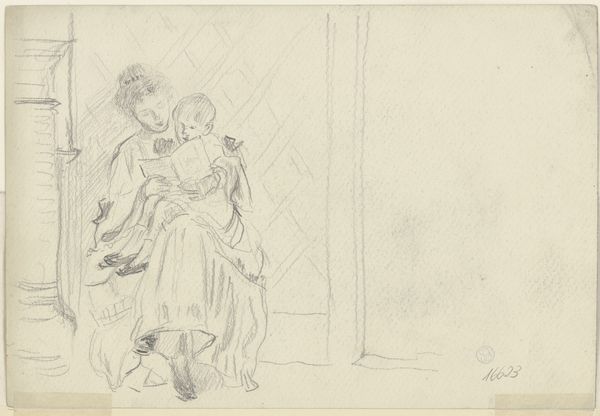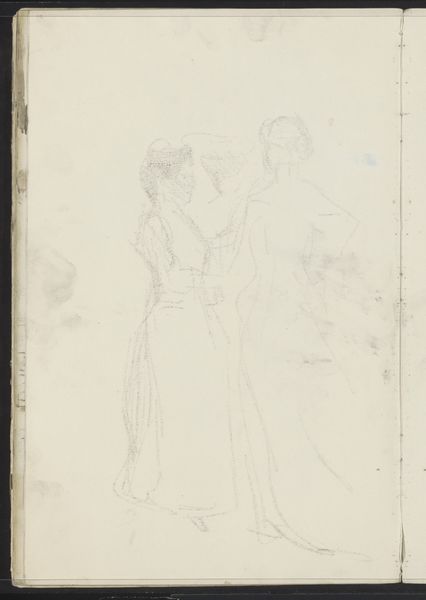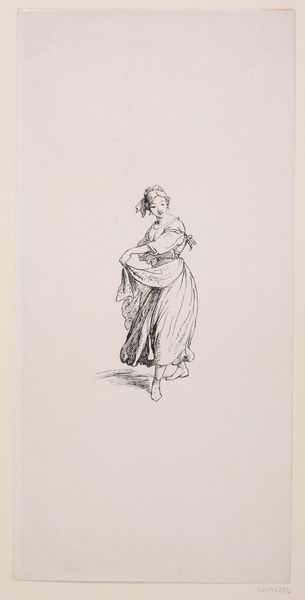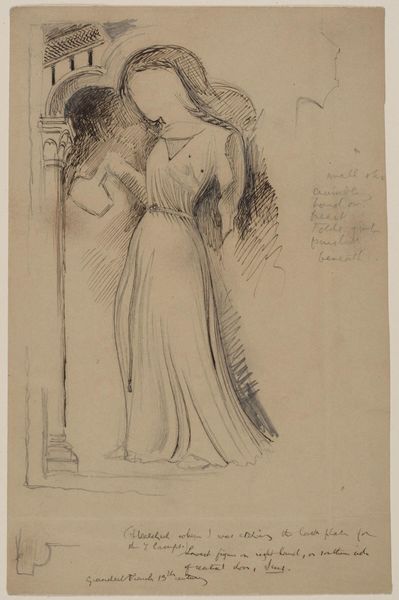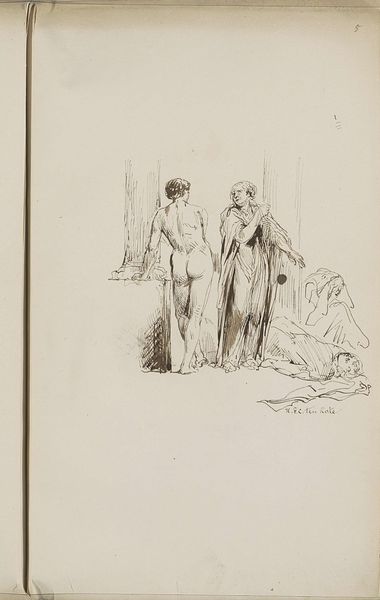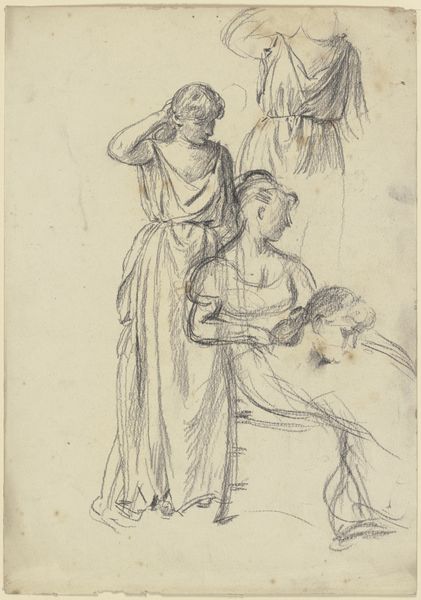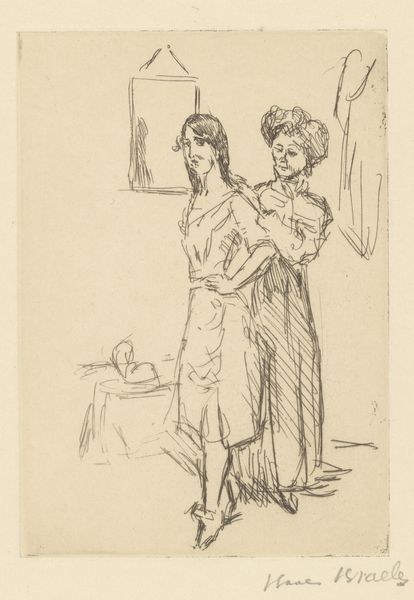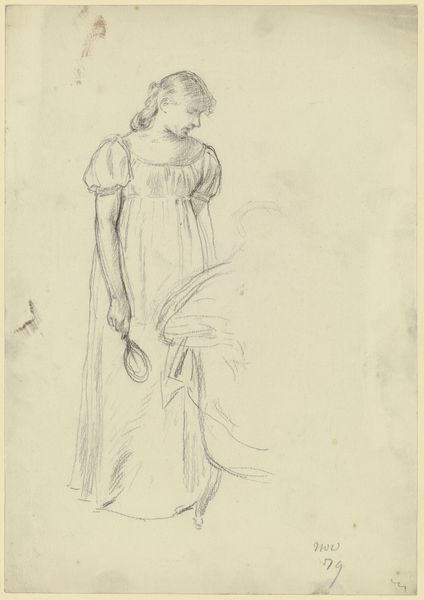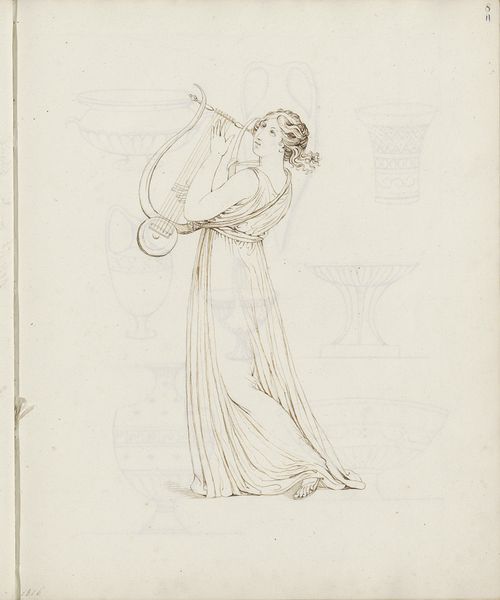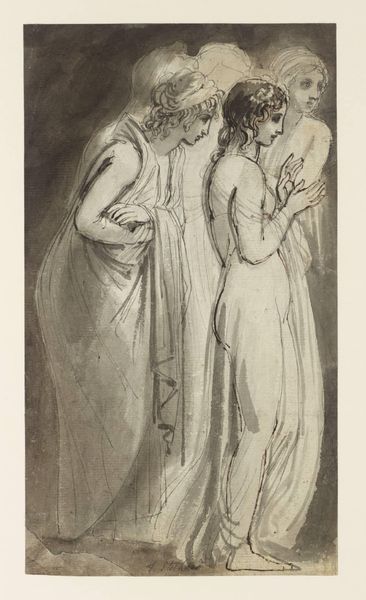
Twee vrouwen die elkaars hand vasthouden, naar klassiek voorbeeld 1816 - 1852
0:00
0:00
drawing, pencil
#
portrait
#
drawing
#
neoclacissism
#
pencil sketch
#
figuration
#
form
#
pencil
#
academic-art
Copyright: Rijks Museum: Open Domain
Curator: This is "Twee vrouwen die elkaars hand vasthouden, naar klassiek voorbeeld," or "Two Women Holding Hands, after a Classical Example." This pencil drawing dates from sometime between 1816 and 1852. Editor: Hmm, it feels like a whispered secret. Very intimate, the way they’re holding hands, almost tentative, in those flowing classical dresses. Is it just me, or is there a faint aura of sadness to it? Curator: I think that feeling stems from the neoclassical style it emulates. This period often invoked idealized, serene figures to convey moral virtue, but beneath that facade, there could be anxieties around social and personal expectations, particularly for women. Their intertwined hands become more complex within this lens. Editor: Anxieties? Tell me more! It's like they're not only physically supporting each other, but also sharing an unspoken burden... or a dream? I almost feel a connection with them. Are they lovers, sisters, confidantes? Curator: The possibilities are definitely intriguing. The artist, jonkvrouw Elisabeth Kemper, positions them with similar features and attire, referencing classical sculptures where form emphasized universal ideals. But this also emphasizes a potentially subversive intimacy that resists simple definition in relation to intersectional aspects of gender and relationships. Editor: See, their clasped hands—it's more than just formality, there’s strength, like a silent pact. Is that me, being oversensitive? Maybe my yearning for emotional connections speaks through what I’m viewing? Curator: It's not being oversensitive at all. Feminist theory helps us question the historical erasures and heteronormative assumptions about female relationships. Kemper’s artistic choice possibly complicates and enriches notions of companionship, love, and resistance in her own era. Editor: What do you mean? Curator: Well, imagine navigating social constraints as a woman during that time. Depicting a supportive, tender bond might subtly challenge those rigid expectations and speak volumes to women of the period who felt marginalized by dominant norms. It also suggests that in shared contact there is mutual dependence. Editor: Wow, I can't look at those hands the same way again. What initially struck me as serene intimacy has become a symbol of quiet strength and solidarity. I came for the aesthetic, but I'm staying for the story, that subtle whisper of defiance across time. Curator: Precisely. Examining art through the prisms of gender and history expands our understanding. Now, our classical figures, once symbols of cold perfection, offer nuanced narratives of resilience.
Comments
No comments
Be the first to comment and join the conversation on the ultimate creative platform.


